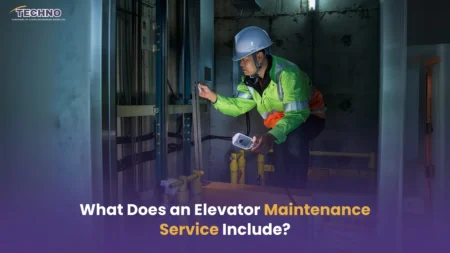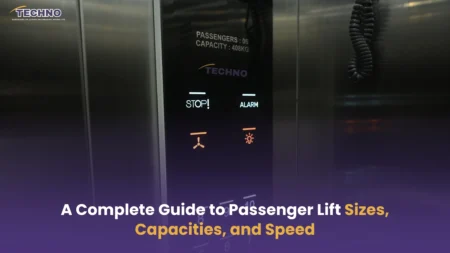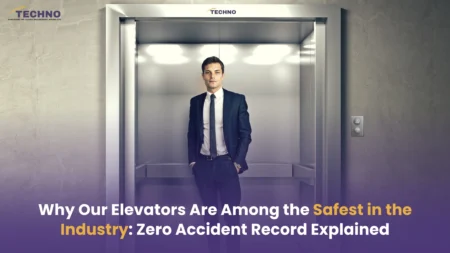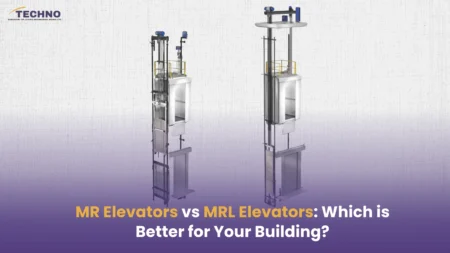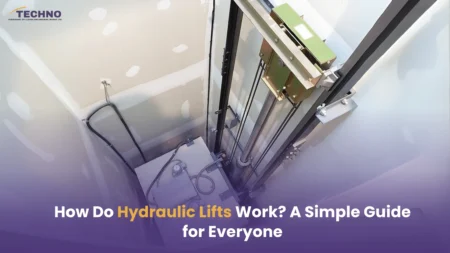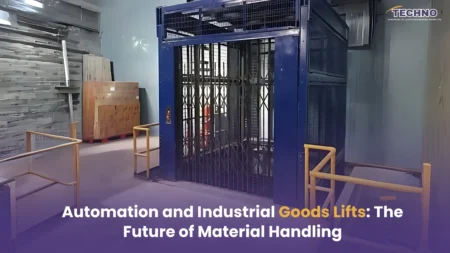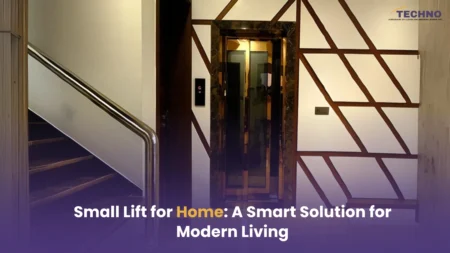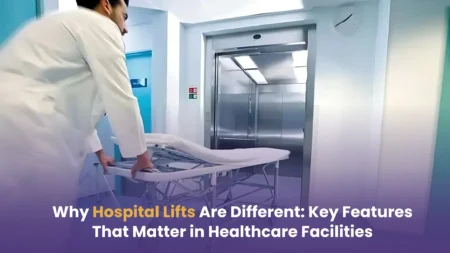The elevator we use every day is more than a machine. It is a cutting-edge technology that can transport a mass of people from one floor to another. But, have you ever wondered why elevators sometimes malfunction, causing major inconvenience? This article will explore the five common issues, solutions, and elevator maintenance tips to ensure smooth operations.
Stuck Elevators
Elevators getting stuck in the middle of the operation timing is one of the most commonly reported issues. This not only has significant inconveniences but also a huge safety threat. Here is a statistic to prove that: Research shows that in the U.S. alone, over 17,000 people get trapped in elevators annually. This sheds light on the frequent risks caused by power failures, mechanical malfunctions, or control system faults.
Take an old building as an example. During a power outage people in such buildings without backup systems, and elevators can come to a halt, trapping occupants inside.
How to troubleshoot
The primary solution for these issues involves installing dependable emergency release systems that enable safe manual operation when the time needs it. Apart from this, the building managers also have to put professional inspections at the forefront in order to find and rectify any potential risks before they soar high.
When the elevator repair service you chose is reliable, they can assess all mechanical and electrical components for vulnerabilities.
Extra Tip
Are your backup power systems and emergency release mechanisms getting the spotlight they deserve? Regular checks in your elevator are more than essential to lessen risks and amplify elevator safety. Make sure these are part of a well-rounded maintenance plan to enhance both reliability and passenger security.
Unusual Noises
Do you oversee the unusual noises of your elevator? Unusual elevator noises, such as grinding, squeaking, or rattling, can signal deeper mechanical issues. These sounds are a silent sign of problems with cables, pulleys, or motor bearings.
For example, continuous rattling could point to lost parts or worn components. Turning a blind eye to these noises can lead to further damage. This will result in higher repair costs and potential safety hazards.
How to troubleshoot
Address unusual noises by inspecting worn-out parts and promising proper Oiling of all moving elements of an elevator. A certified technician can find out the loose or damaged components and secure or replace them as necessary.
Extra Tip
Preventative maintenance is key to resolving this issue. You have to schedule periodic inspections and encourage building managers to listen for any abnormal sounds. Learning about these issues early can put a stop to expensive repairs and significantly improve the lifespan of the elevator system.
Slow Elevator Operation
Is your elevator moving slower than usual? It’s time to carry out a deep-dive examination. This is because the sudden decline in the speed could be due to worn-out motors, control system issues, or age-old machinery.
How to Fix
The problem can be huge but the solution is not. A professional evaluation is absolutely essential to diagnose the cause. Replacing outdated parts or recalibrating the system often resolves speed issues and provides the utmost convenience to the passengers.
Extra Tip
The key here is to conduct regular speed checks and system optimizations with a trusted elevator repair service in order to maintain peak performance.
Elevator Door Problems
Do the doors of your elevators not close properly or get stuck frequently? The elevator door problems can result in big losses if ignored in the beginning. These issues can stem from faulty sensors, misaligned tracks, or poor lubrication.
How to Fix
Follow the below steps to sidestep elevator door problems effectively.
- Clean the door tracks
- Align sensors
- Make sure they are well-lubricated.
If problems persist, consult with professionals to investigate and repair the door mechanism.
Extra Tip
To break free from this, you need to keep sensors and tracks free from dust and debris. Routine cleaning and inspections prevent most door malfunctions.
Frequent Breakdowns
Have you ever put your mind to why some elevators break down so often? Recurring breakdowns can result from these:
- Overuse
- Electrical faults
- Neglected servicing
How to Fix
A detailed repair service should inspect electrical components, motors, and worn-out parts to find out and fix the root of the problems.
Extra Tip
Invest in an annual full-system check-up to find and prevent potential failures. This makes sure of a reliable, long-term operation.
The Final Note
These concerns may look small in the beginning but can cause significant damage in the end. For this reason, regular elevator maintenance and timely intervention are more than essential to prevent these common problems. A trusted elevator repair service combined with periodic inspections can lessen the downtime and keep your elevator running smoothly.
Techno Elevators offers the best Elevators Maintenance Services across India, ensuring smooth and safe operation of your lifts.
Our expert team provides timely inspections and reliable support to keep your elevators running at peak performance.


